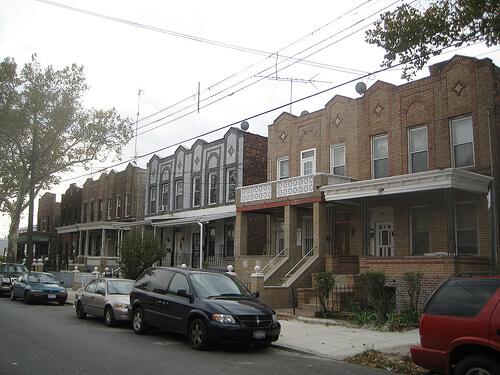De Blasio’s Affordable Housing Template Drawing Criticism


The Mayor’s plan is to restore and build 200,000 affordable housing units in 10 years. To locate a testing ground for this urban redevelopment strategy, de Blasio followed the lead of past New York power brokers and found a poorer neighborhood: East New York, a neighborhood with high crime and poverty rates, but one located near a major transit hub (Broadway Junction) and with the room for taller, denser construction. The neighborhood is one of 15 that have been targeted by de Blasio’s administration for the construction of affordable developments (the other 14 neighborhoods haven’t been named yet).
De Blasio’s plan would rezone large parts of East New York to encourage mixed-use, high-rise development with retail on the bottom level and apartments divvied up like so: 50 percent market rate, 30 percent middle income, and 20 percent low income. The Mayor wants to mandate the inclusion of lower-rate apartments in new residential developments citywide—a policy known as mandatory inclusionary zoning, and one that was optional (though incentivized) by Mayor Bloomberg. The strategy is intended to “cushion the impact of gentrification” for incumbent neighborhood residents, according to City planning Director Carl Weisbrod.
There’s one (big) problem, however: no one seems to think this type of development will work in East New York. A story in Newsday this week outlines the flaws in de Blasio’s strategy and gives voice to its skeptics. An affordable housing developer named Martin Dunn told the paper that current rents in the area don’t “support the cost of new construction,” particularly construction with the profit-constrictions of mandatory inclusionary zoning. That means subsidies to developers will be required to put up new buildings.
Local residents and politicians clearly desire new development and infrastructure, but are wary of being “pushed or priced out” anyway. The preference seems to be for low-rise, low-income housing, which makes perfect sense given the architectural character of the neighborhood, as well as the financial hardships faced by many families in East New York, where nearly half of households make less than $25,000 annually. (The Mayor’s citywide plan calls for eight percent of affordable units to go to extremely low-income families, although the approach will be tailored to each neighborhood.) Councilmember Rafael Espinal said he supports nearly all aspects of the plan, but not high-rise buildings. “We want to preserve the character of the community, and not turn it into Downtown Brooklyn or Williamsburg,” he said.
Unnamed officials in the story said they’re considering subsidies from sources that include city or federal cash, city-backed bond financing, and enticements such as tax credits for developers. The administration plans to present its East New York-specific zoning proposal to community leaders in the fall. That presentation will hold clues about how the Mayor plans to tackle New York’s housing problems beyond the campaign stump.
Follow Phillip Pantuso on Twitter @phillippantuso.
You might also like 




















